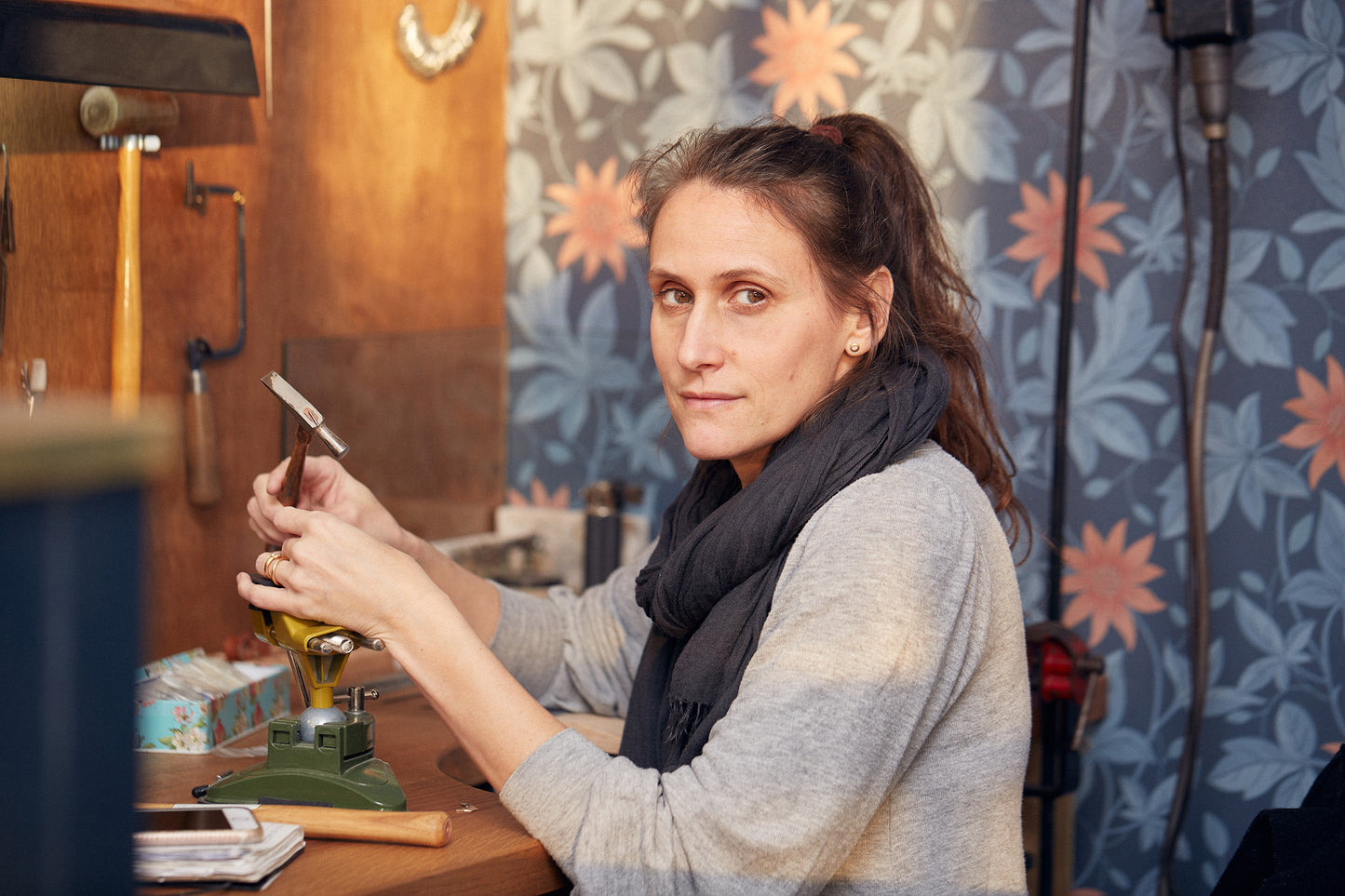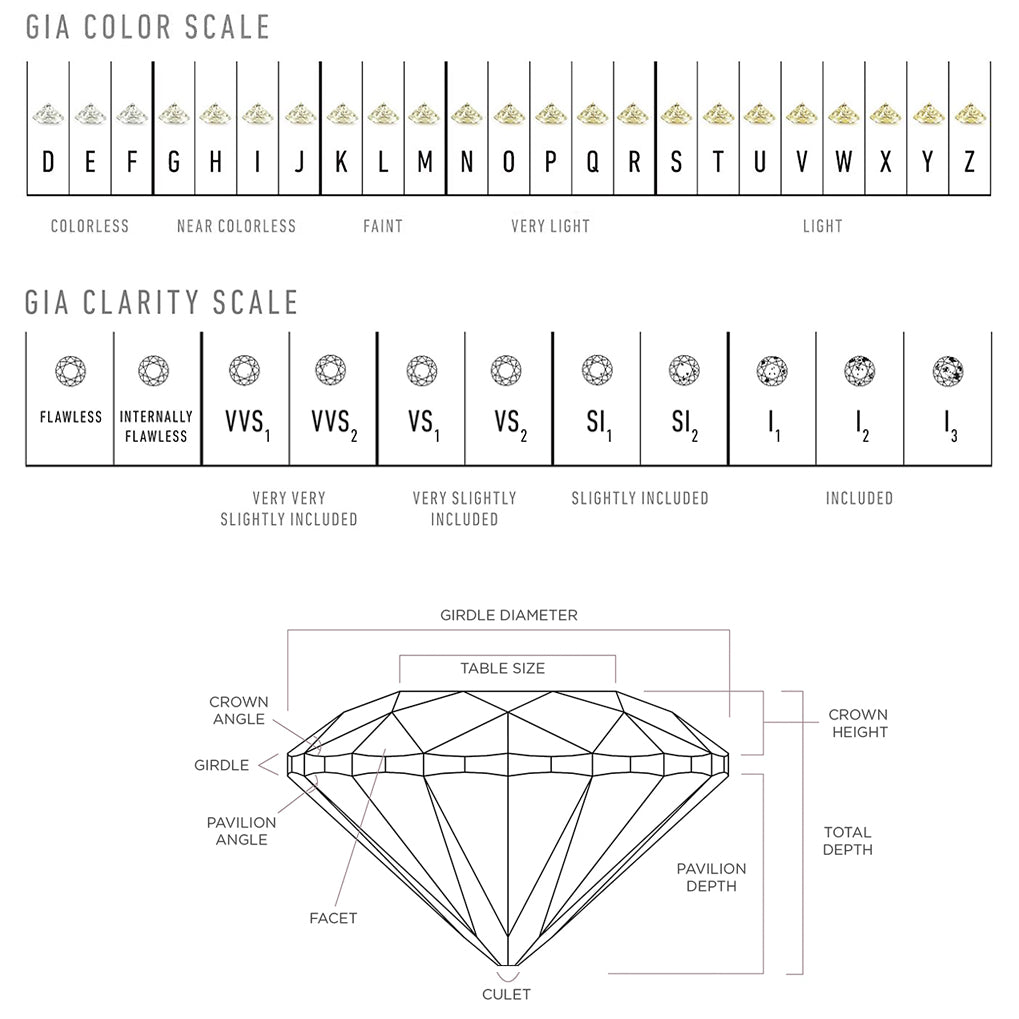This store requires javascript to be enabled for some features to work correctly.
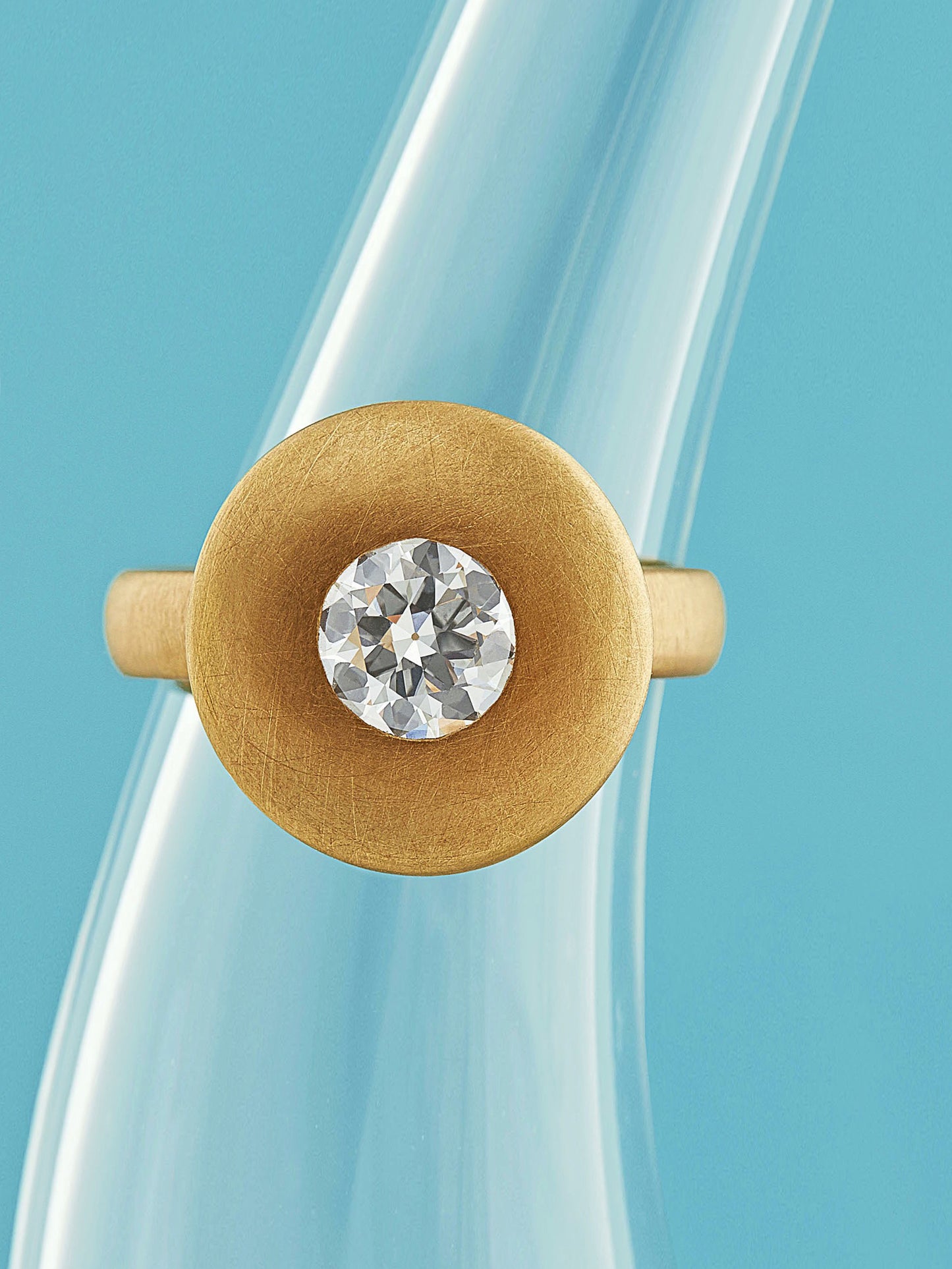
Reused, recycled and repurposed we aim to acquire our stones from old/antique pieces and gem collections. These hand cut gems differ from newly cut stones, giving an exceptional radiance and charm. The shapes of these stones will encompass; rose, cushion or old European cut diamonds, even our brilliant cut stones will be sourced from older pieces/stones enabling us to provide the best quality and value as well as reducing our environmental and human impact. The colour gem stones we use are natural, without heat enhancements. Cut to intensify their beauty and depth of colour by experienced stone cutters, who worked by hand understood how to get the best from the gemstones.
Cadby & Co. believe in sustainability and making the most out of what we have. That is why we specialise in using antique stones and reusing/upcycling them into modern and classic contemporary design. Our aim is to create stunning pieces of jewellery that not only look elegant, but also have a meaningful backstory. Each stone has its own unique history and we strive to give them a new lease on life through our timeless design. Cadby & Co. believe that by reusing and upcycling these stones, we are able to reduce the environmental impact and create one-of-a-kind pieces that you will treasure for years to come.
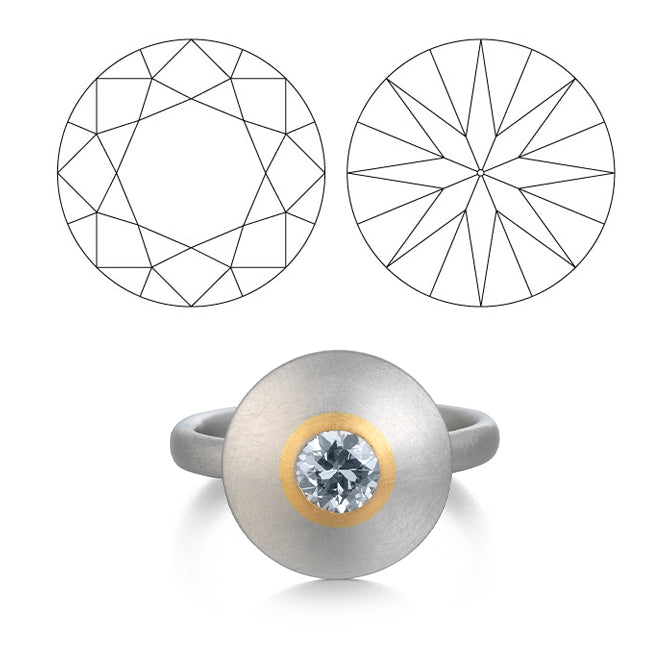
The Round Brilliant ‘ideal’ Cut represents more than six centuries of evolution of diamond design and diamond cutting skill, combined with intensive research into how light travels through diamonds. As the manner in which we light our living environment has changed, so has the manner in which we cut diamonds for optimum visual performance.
The table facet of round brilliant cut diamonds has increased in size, crown and pavilion angle measurements have become shallower, star and lower girdle facet measurements have become longer, and culet sizes have become smaller. This is due in no small part to the publication of ‘Diamond Design’ in 1919 by Marcel Tolkowsky, who was a diamond cutter and mathematician, who worked out the best combination of proportions to maximise the volume of light return and brightness from the round brilliant cut diamond design, taking into account the transition from candlelight to electrical lighting which was occurring at the time.
The modern round brilliant cut diamond which features 58 facets if you count the culet as a facet, but with ever smaller to invisible cutlets in modern stones, many are considered as 57 facet cuts. This way of cutting entered the scene in the early 1950’s and has been dramatically improved upon over the past few decades due to the emergence of computerised mathematical tracing and proportion analysis programs, which make it possible for diamond cutters to fine tune their production to produce the highest volumes of light return and maximise sparkle.
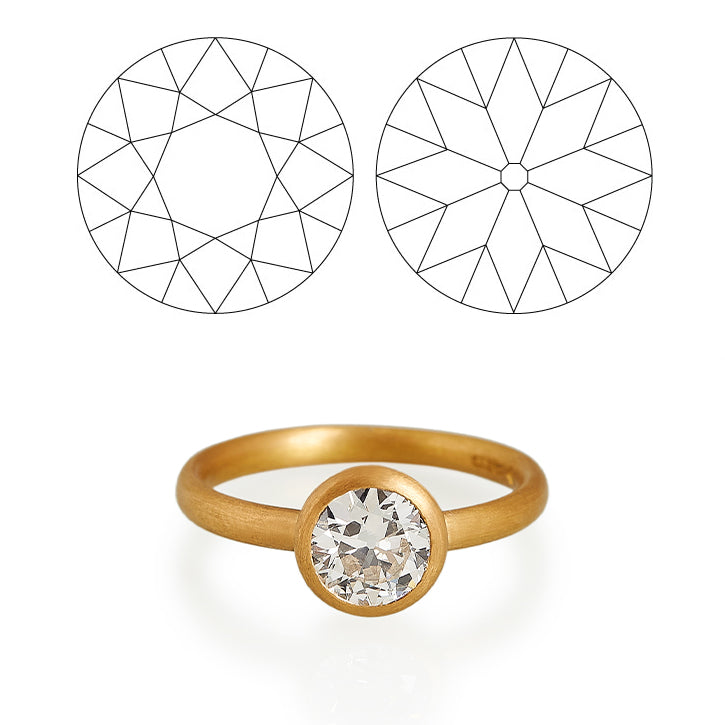
The Old European cut is a wonderful antique diamond cut popular from the late 19th to mid 20th century. They succeeded the Old Mine cut and share many of the same handcrafted characteristics: higher crowns, smaller tables, larger, open culets and varied proportions.
It also shows the small imperfections in shape and symmetry known to Old European Cut, as they were created before the use of today’s diamond-cutting technology. As such, it creates a special, one-of-a-kind stone, retaining the artistry and grace associated with the fully handcrafted diamonds of the Georgian and Victorian periods.
Old European Cuts have a round shape. They also have 58 facets like Old Mine cut diamonds, which is one more than the modern round brilliant cut but they’re larger and chunkier than the modern stones, giving them an almost softer look with a lovely “inner fire.”
Each one has a beautiful organic look, with a unique character that only something made by hand can possess.
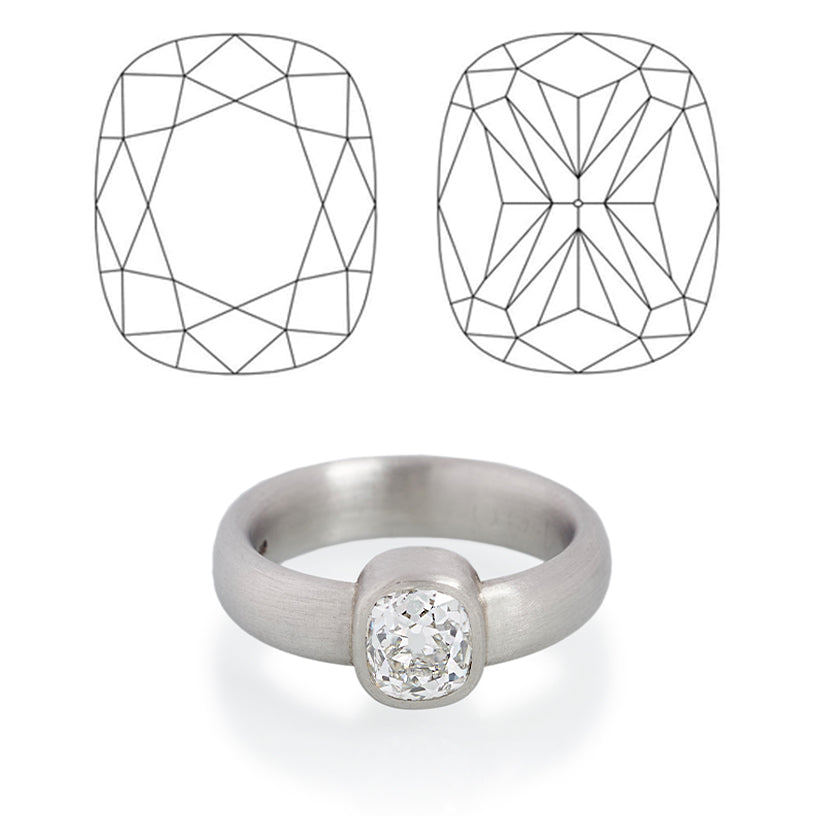
The cushion cut is a beautiful diamond shape/cutting style that is shaped like a square or rectangle with rounded corners, much like the shape of a pillow (hence the name). It evolved from the antique Old Mine Cut, popular from the early 18th to late 19th centuries, which typically features a smaller table, higher crown, larger culet and 58 facets.
Traditional Cushion Cut diamonds, often referred to as antique cushions, chunky cushions or cushion brilliants—return light in a chunkier pattern than modern cut diamonds. While generally less brilliant than round Brilliant Cut diamonds, Cushion Cut diamonds often have greater ‘fire’. Combined with a larger culet (considered desirable for the pattern created when viewed through the table), these qualities of the traditional cushion cut create a distinctive look that’s coverted today among gem dealers.
The Cushion Cut has been refined over time to enlarge the table, shrink the culet and improve facet angles to increase brilliance. Modern Cushion Cut diamonds, often referred to as ‘cushion modified’ brilliants, tend to have different facet patterns on the pavilion, one of which creates a “crushed ice” look.
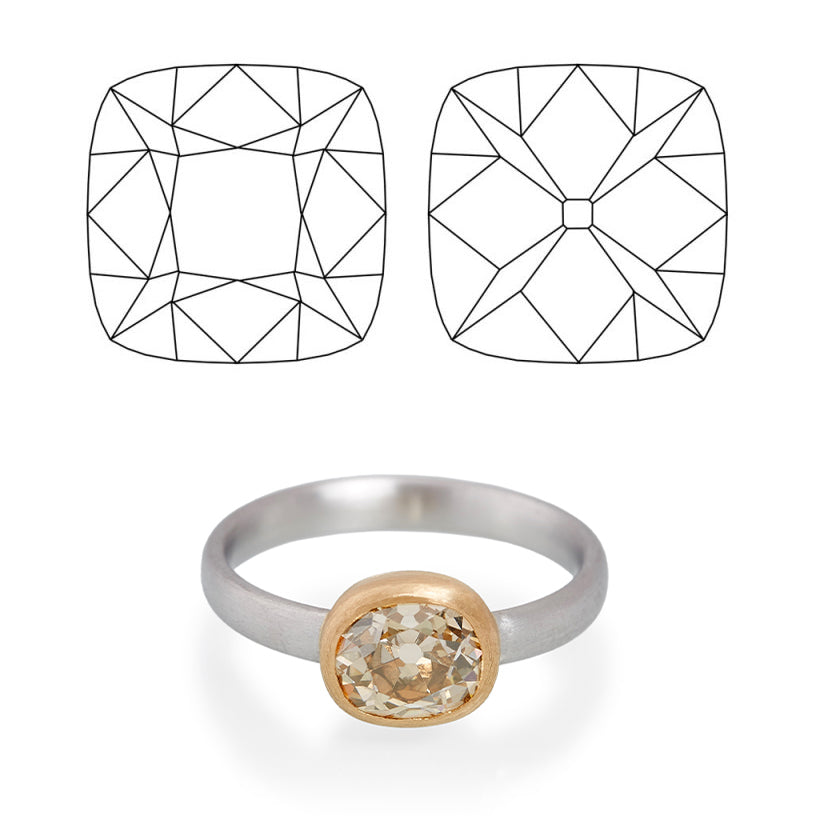
During the 18th–19th centuries, when diamonds were measured by eye and cut by hand, Old Mine Cut diamonds were perhaps the most common diamond cut. Diamond cutters at the time shaped the diamonds by grinding one diamond against another along the natural octahedral shape of their crystals. This produced diamonds with mostly squarish shapes, higher crowns, smaller tables, larger, open culets and varied proportions that gave each stone an individual “personality.”
Old Mine–cut diamonds also have 58 facets, one more than the modern round brilliant cut. However, due to the handcrafted nature of the Old Mine cut, the facets are larger and less uniformly shaped than those of the round brilliant cut, giving each Old Mine Cut diamond its own endearing sparkle that performs particularly well in candlelight or low-light settings.
You can find Old Mine Cut diamonds most often today in jewellery from the Georgian (1714–1837) and Victorian (1837–1901) eras.
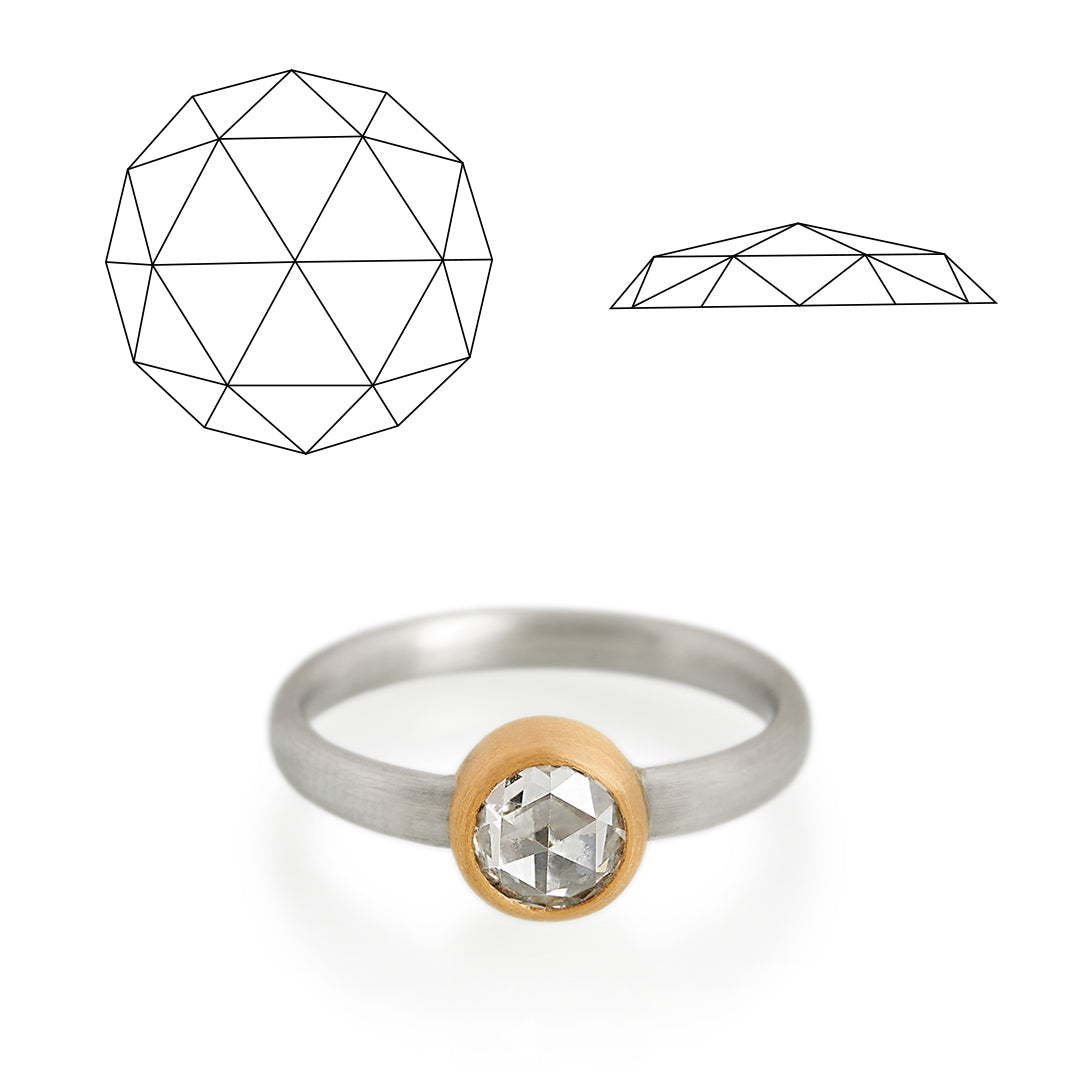
Said to resemble the appearance and arrangement of petals in a rose, the Rose Cut is a lovely antique diamond cut that dates back to the 16th century when early bruting, faceting and polishing of diamonds began to take place.
The Rose Cut produces a diamond that is flat on the bottom and domed at the top with a varying number of triangular facets (24 in a full rose cut as shown). The cut performed beautifully in the only available light at the time—candlelight—creating a soft sparkle rather than the bright light of the more modern brilliant cut.
Vintage Rose Cut diamonds are rare, especially those that are well shaped with commendable clarity.
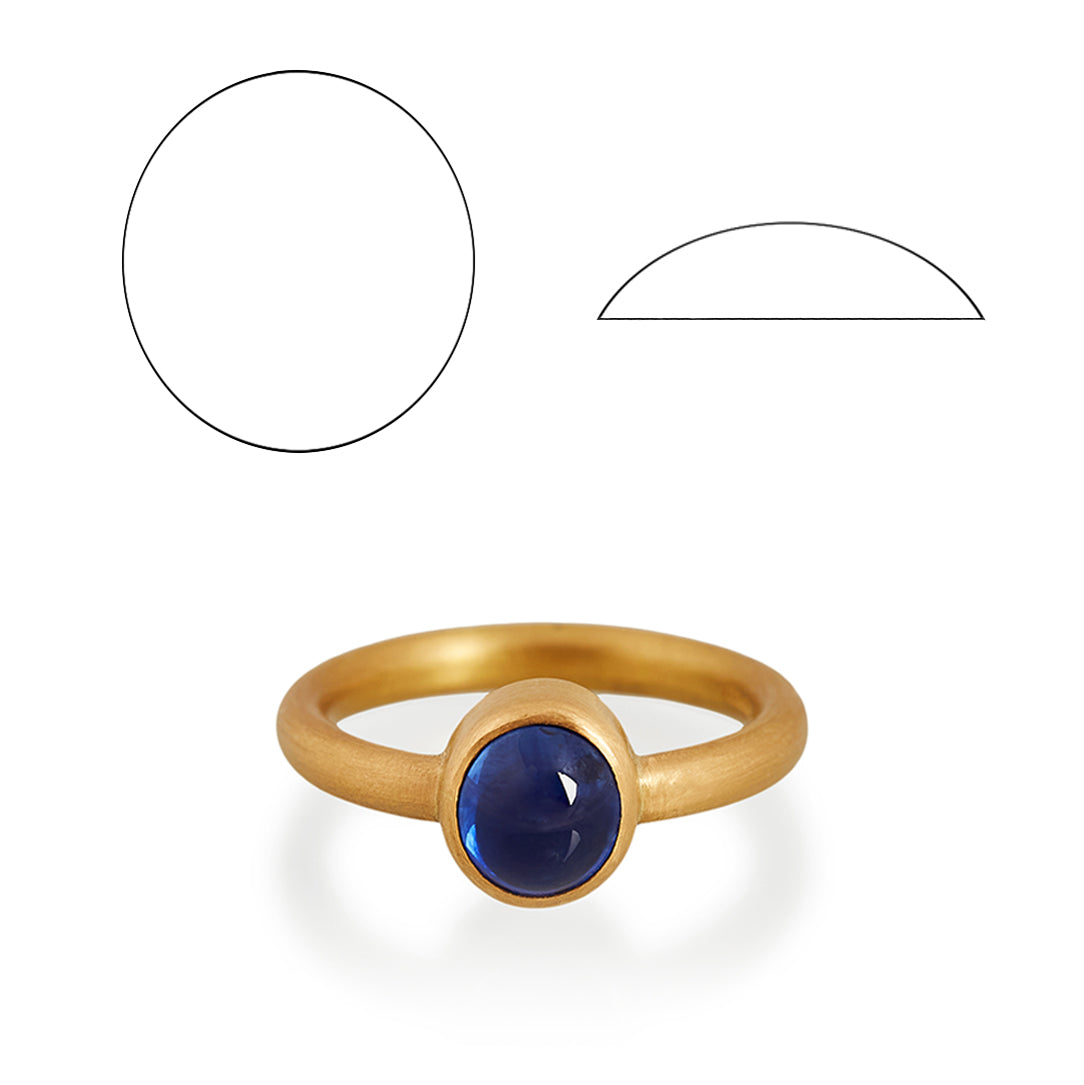
Before modern advancements in gemstone cutting, many gems were shaped into cabochons, from the French term caboche, meaning knob or small dome. In fact, some 'Burmese' rubies, among the rarest and most expensive gemstones in the world, appear as cabochons in royal jewellery collections.
Cabochons then have no facets, instead a smooth, rounded or convex top that’s highly polished, along with a flat or slightly inverted domed base. Certain gems display special properties only when shaped as a cabochon, showing off their fine colour and fascinating “world within.”

